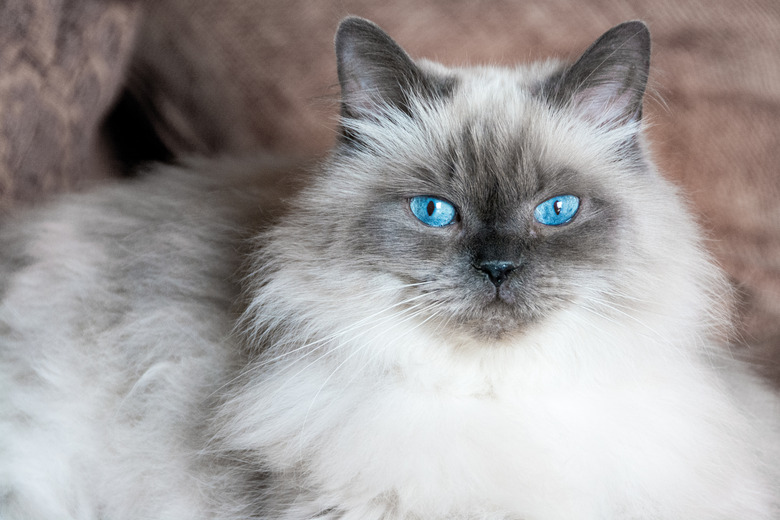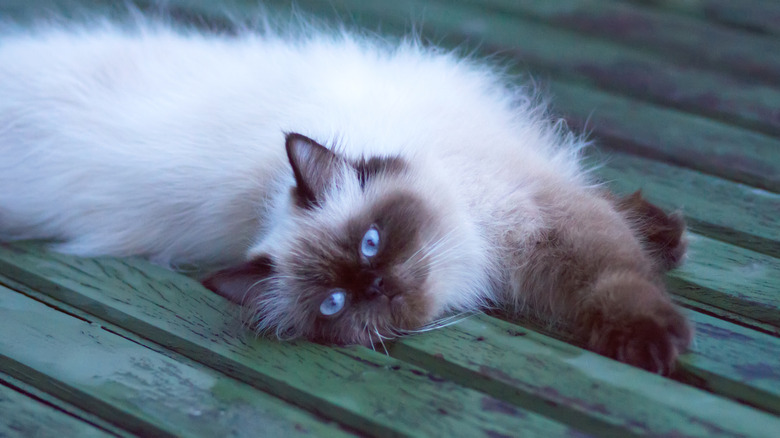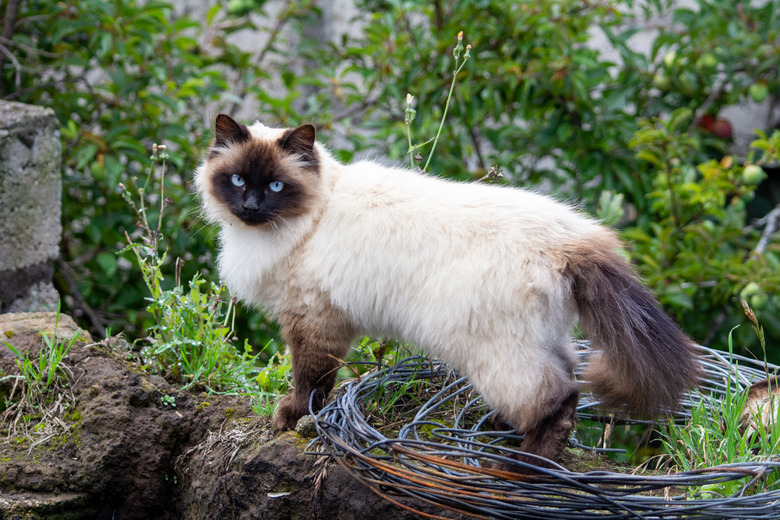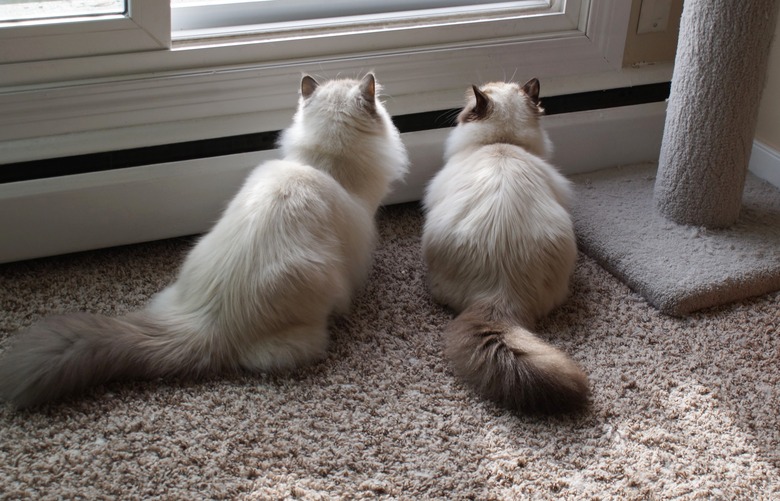Himalayan Cat Breed Characteristics
Himalayan cat quick facts
Himalayan cat quick facts
Length: 12 – 16 inches
Weight: 7 – 12 pounds
Lifespan: 8 – 11 years
Coat length: Long
Coloring: All coat colors with a pointed coat pattern and blue eyes
Grooming needs: High
Friendliness: Breed alone is not an accurate predictor of individual cats' personalities. However, Himalayan cats are generally regarded as gentle and sweet.
The Himalayan cat is a popular breed and stunning addition to your home with their flat face and round eyes. They come in nearly any color and have a pointed color pattern, which means they have dark-colored points on the ears, tip of the tail, and paws. They are not only beautiful, but they have a calm and gentle personality. They tend to get along with humans and pets alike, but may not be the best choice if you have a rowdy home. Be sure to consider not only the breed's appearance and personality, but also their care requirements before you bring a new Himalayan kitten into your home.
Himalayan cat history
Himalayan cat history
Himalayan cats, sometimes referred to as "Himmies," are considered part of the Persian group but are recognized as a separate breed by the International Cat Association. The American Cat Fanciers' Association (CFA), on the other hand, classifies Himmies as a Persian cat. The association considers Himalayans one of the color divisions of the Persian breed along with solids, tabbies, bicolors, and particolors. Persian cats, thought to have originated in Persia, are one of the oldest cat breeds and their history is not fully known.
The Himalayan breed was created as a part of the breeding program started in 1931 and run by Virginia Cobb and Dr. Clyde Keeler. The first Himalayan kitten was named Newton's Debutante. Other breeders that contributed to the development of the Himalayan cat breed by crossing Persian and Siamese cats include Marguerita Goforth and Ben Borrett. The Himalayan was bred to have the colorpoint markings of a Siamese cat while still maintaining the appearance of a Persian cat.
The cat breed is extremely popular among cat owners and some Himalayan cats even have celebrity status. Mr. Jinx is played by a Himilayan cat in the movie "Meet the Parents" and Sassy was the leading Himalayan cat role in the "Homeward Bound" movies.
Himalayan cat personality
Himalayan cat personality
These long-haired cats are sweet and gentle members of the family. They do best in calm, quiet homes and they tend to be very friendly with people and enjoy lounging with your as you relax or sleep. If you do have a more boisterous environment in your home, the cats will likely adapt to it — with some patience and love.
They do, like other Persian cats, continue to have a kitten-like playfulness in short bursts. However, it is not uncommon for them to become quite sedentary, so it is important to have playtime each day with teaser toys, catnip mice, and interactive toys.
They have a heavy build and don't tend to climb and jump much. Himalayans tend to be quiet cats and when they do meow, they make a melodious sound.
Himalayan cat lifespan and health issues
Himalayan cat lifespan and health issues
Himalayan cats have an expected lifespan of 8 to 11 years. They tend to be quite healthy, but there are some health problems that breeders should test for in Himalayan and Persian cats.
- polycystic kidney disease (PKD): a condition common in Persians that causes cysts to develop in the kidneys, eventually leading to kidney failure.
- progressive retinal atrophy: a condition that can eventually cause blindness
- hypertrophic cardiomyopathy: a common heart disease in cats that causes the wall of the heart to thicken.
Himalayan cat grooming and care
Himalayan cat grooming and care
The Himalayan cat's long fur needs daily brushing. Failing to regularly groom these cats can cause the coat to become matted. Once matting occurs, you may need to take your cat to a professional groomer or your veterinarian to safely remove the mats and tangles.
In addition to combing out their fur, wipe their eyes daily. Some Himmies have excessive tearing and may develop tear stains on their faces. Trim their nails every two or three weeks and brush their teeth with toothpaste made for cats.
Feed high-quality cat food as recommended by your veterinarian and provide fresh water at all times. Consider investing in a water fountain for your cat as this will keep the long hair on their chin and chest drier and make it less likely to stain or tangle.
Welcoming a new cat into your home
Welcoming a new cat into your home
Cat-proof your home before you bring the Himalayan kitten or cat into your home. Set up the litter box in a quiet location where your cat can easily access it and feel safe. Make sure to keep the litter box clean. Provide a scratching post and plenty of toys, as well as safe hiding spots for your new cat, such as cardboard boxes.
Initially, keep your cat in a separate room away from other pets. Release them from their carrier and sit quietly as they explore the room. It is good to talk to your new cat. Though don't force them to be petted or held until they are ready. Offer treats and toys to help develop a bond with your new cat. Once they are comfortable, you can open up more of the home for them to explore. Use plenty of positive reinforcement and never punish your cat.
If you have other pets in the household, introduce them to your new cat through the door or a baby gate first. This keeps both animals safe as they get used to the other animal's smell. Introduce the pets slowly and keep each meeting positive. Make sure to supervise your new cat and other pets until you are confident that they are getting along.
Himalayans are sweet cats and loving members of the family, but each cat will adjust to their new surroundings at their own pace. Stay calm and patient and before your know it, your Himalayan cat will warm up to you — and be an active part of the family.



